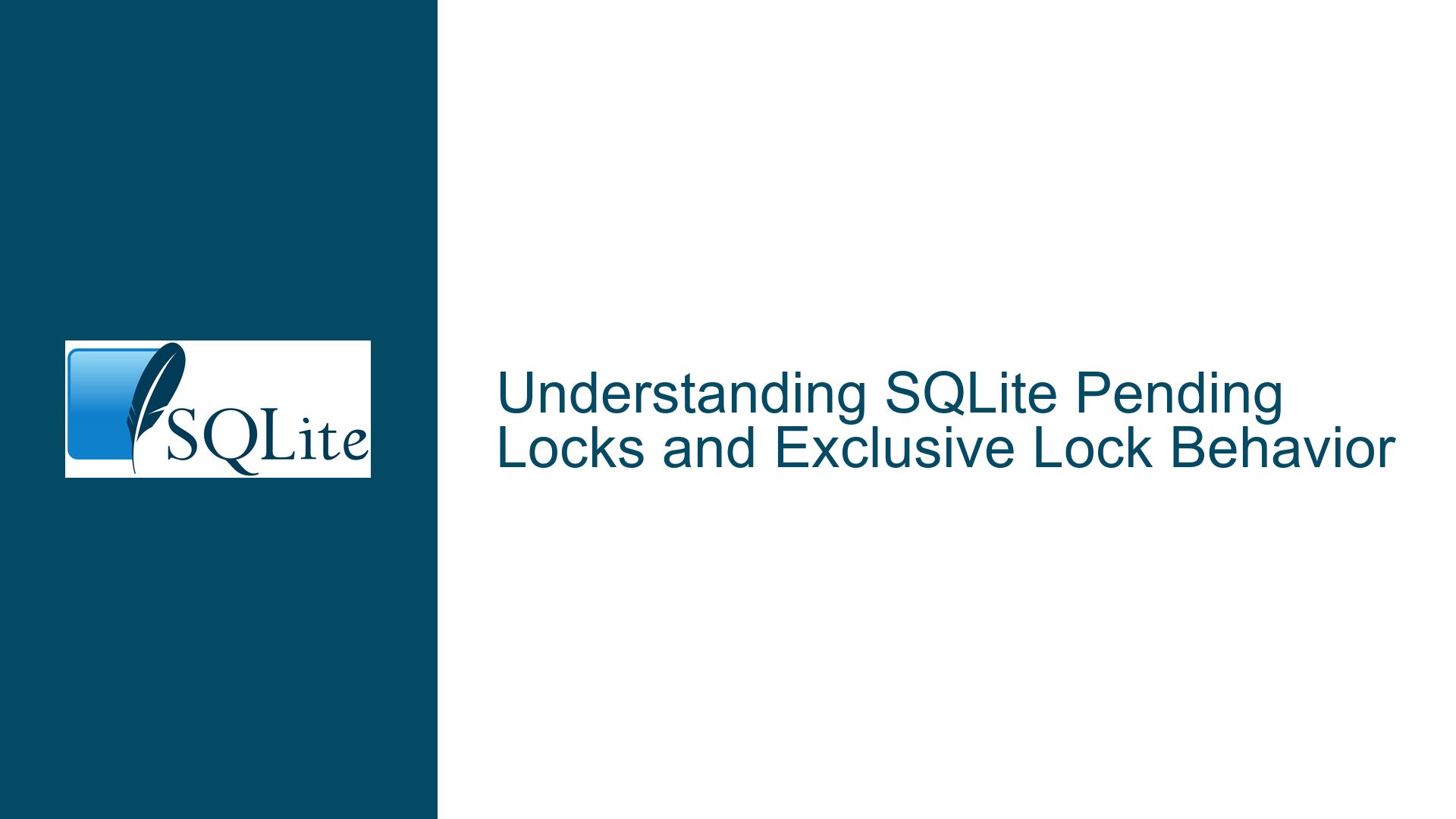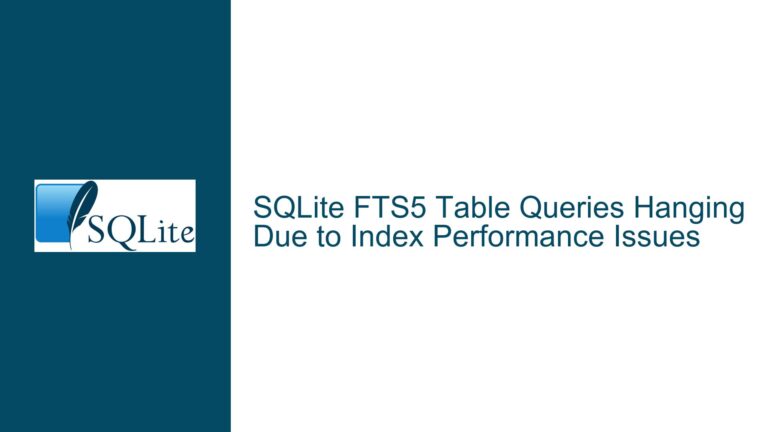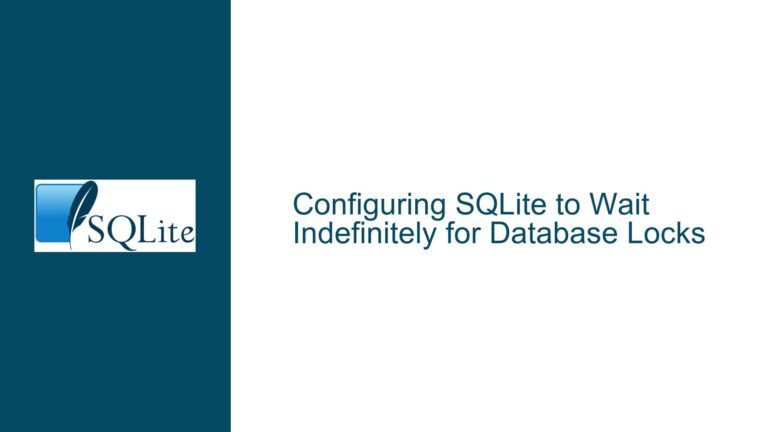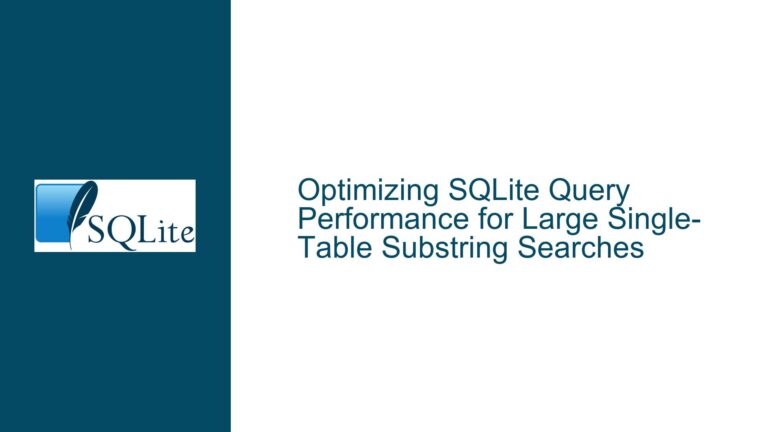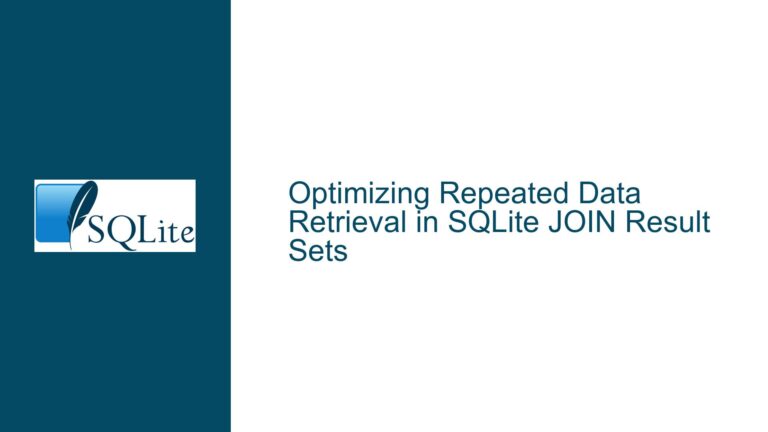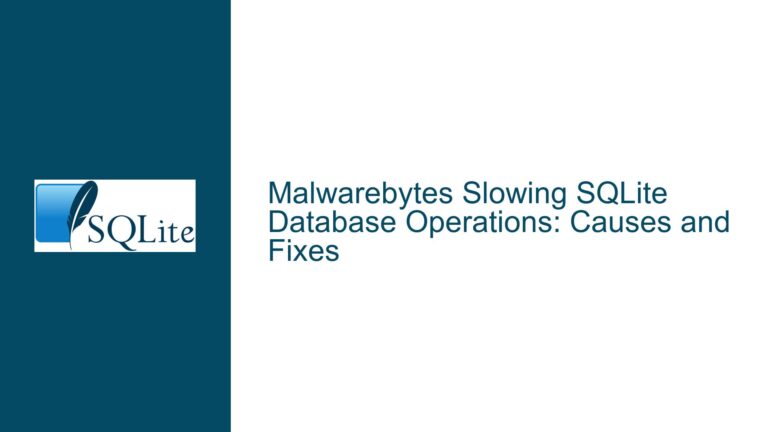SQLite Pending Locks and Exclusive Lock Behavior
Pending Locks as a Stepping Stone to Exclusive Locks in SQLite
In SQLite, locking mechanisms are crucial for ensuring data integrity and consistency, especially in environments where multiple processes or threads may attempt to access the database simultaneously. The concept of a "pending lock" is a critical part of SQLite’s locking hierarchy, acting as an intermediate state that facilitates the acquisition of an exclusive lock. A pending lock is not an end state but rather a transitional phase that helps manage contention and ensures that only one writer can proceed to an exclusive lock at a time.
When a process or thread attempts to write to the database, it must first acquire a reserved lock. If successful, the process then attempts to escalate the lock to a pending lock. The pending lock serves as a signal to other processes that a writer is preparing to commit changes and that they should not attempt to start new write operations. Once the pending lock is held, the process can then attempt to acquire an exclusive lock, which is required to make changes to the database file.
The key question raised is whether the write lock at the "pending byte" is released once an exclusive lock is successfully obtained. The pending byte is a specific byte in the database file that SQLite uses to manage pending locks. When a process holds a pending lock, it writes a value to the pending byte to signal its intent to other processes. Once the exclusive lock is acquired, the pending lock is no longer needed, and the pending byte is typically unlocked. This behavior ensures that the locking mechanism remains efficient and that resources are not unnecessarily held, which could lead to contention or deadlocks.
Understanding this behavior is essential for database developers and administrators who need to optimize SQLite performance, particularly in high-concurrency environments. Misunderstanding the locking hierarchy can lead to suboptimal database designs, poor performance, and even data corruption in extreme cases.
Interrupted Write Operations and Their Impact on Locking Behavior
One of the primary concerns related to pending locks and exclusive locks in SQLite is the potential for interrupted write operations. Interruptions can occur due to various reasons, such as power failures, system crashes, or forced termination of the database process. When a write operation is interrupted, the state of the locks and the database file can become inconsistent, leading to potential corruption or data loss.
In the context of pending locks, an interrupted write operation can leave the pending byte locked, preventing other processes from acquiring the necessary locks to proceed with their operations. This situation can create a bottleneck, as other writers will be unable to escalate their locks to pending or exclusive states. Additionally, if the interrupted process was in the process of acquiring an exclusive lock, the database file may be left in an inconsistent state, requiring recovery procedures to restore integrity.
The impact of interrupted write operations is particularly pronounced in environments where SQLite is used without a robust journaling mechanism. SQLite’s journaling modes, such as WAL (Write-Ahead Logging) and DELETE, play a crucial role in mitigating the risks associated with interrupted writes. However, even with journaling enabled, understanding the behavior of pending locks and exclusive locks is essential for ensuring that the database can recover gracefully from interruptions.
Another potential cause of issues related to pending locks is improper handling of the locking hierarchy by application code. If an application attempts to acquire locks in an incorrect order or fails to release locks properly, it can lead to deadlocks or contention. For example, if a process holds a shared lock for an extended period while another process is waiting to acquire a pending lock, the system may become unresponsive. Properly managing lock acquisition and release is critical for maintaining database performance and stability.
Implementing PRAGMA journal_mode and Best Practices for Lock Management
To address the issues related to pending locks and exclusive locks, it is essential to implement best practices for lock management and to leverage SQLite’s built-in mechanisms for ensuring data integrity. One of the most effective ways to mitigate the risks associated with interrupted write operations is to use the PRAGMA journal_mode command to enable WAL mode. WAL mode provides several advantages over the traditional rollback journal, including improved concurrency and reduced contention for locks.
In WAL mode, write operations are appended to a separate WAL file rather than being written directly to the main database file. This approach allows readers to continue accessing the database without being blocked by writers, as they can read from the last consistent state of the database. Writers, on the other hand, can proceed with their operations without needing to acquire an exclusive lock immediately. Instead, they write to the WAL file and periodically commit changes to the main database file in a controlled manner.
Another important consideration is the use of the PRAGMA locking_mode command to control the locking behavior of the database. By default, SQLite uses NORMAL locking mode, which allows multiple readers and a single writer to access the database concurrently. However, in high-concurrency environments, it may be beneficial to use EXCLUSIVE locking mode, which prevents other processes from accessing the database while a write operation is in progress. While this approach reduces concurrency, it can help prevent contention and ensure that write operations complete successfully.
In addition to configuring the journaling and locking modes, it is crucial to implement proper error handling and recovery mechanisms in application code. This includes checking for errors after each database operation and taking appropriate action, such as retrying the operation or rolling back changes. It is also important to ensure that locks are released promptly after they are no longer needed, to prevent contention and deadlocks.
Finally, regular database maintenance, such as vacuuming and integrity checks, can help prevent issues related to lock contention and interrupted write operations. Vacuuming removes unused space from the database file, reducing the likelihood of fragmentation and improving performance. Integrity checks, on the other hand, can help identify and correct any inconsistencies in the database file, ensuring that it remains in a consistent state.
By following these best practices and leveraging SQLite’s built-in mechanisms, database developers and administrators can ensure that their databases remain performant, stable, and resilient to interruptions. Understanding the behavior of pending locks and exclusive locks is a critical part of this process, as it allows for the design of robust and efficient database systems that can handle the demands of high-concurrency environments.
